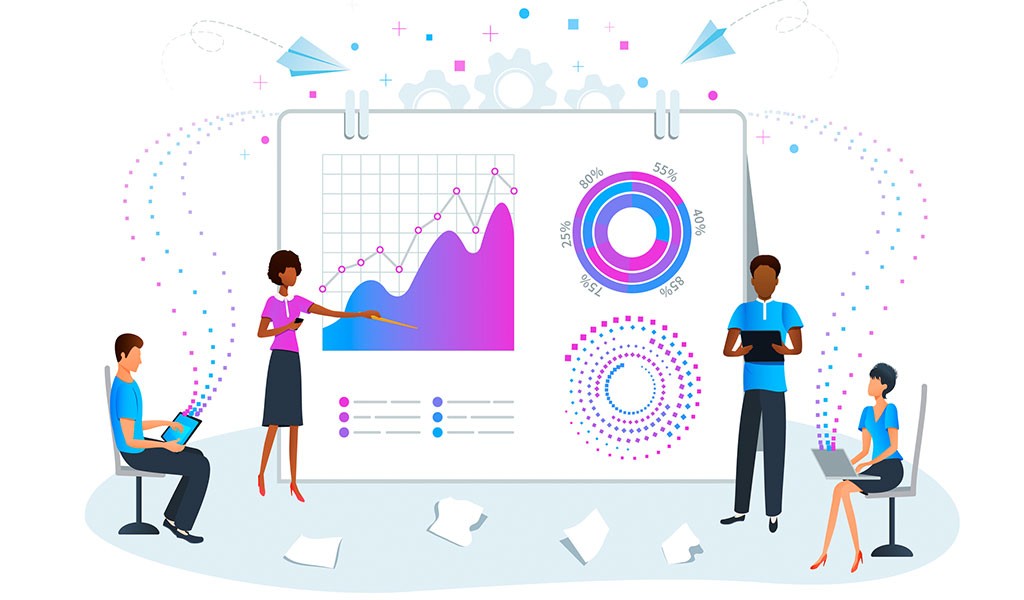Predictive analytics is a powerful approach that uses historical data, statistical algorithms, and machine learning techniques to forecast future events. By examining patterns and trends in past information, organizations can anticipate customer behavior, market shifts, resource needs, and more—enabling them to make proactive decisions rather than merely reacting to circumstances as they unfold.
In a world defined by rapid changes and complex data, predictive analytics helps businesses stay one step ahead. Whether you’re aiming to improve sales forecasting, reduce equipment downtime, or enhance risk management strategies, predictive analytics provides the insights needed to allocate resources effectively and sharpen your competitive edge.
Prerequisites for Predictive Analytics
- Foundational Statistics and Math:
A firm grasp of statistical methods is crucial for building reliable predictive models. Understanding probability, distributions, and regression techniques ensures more accurate forecasts. - Machine Learning and Algorithms:
Predictive analytics often leverages algorithms like linear regression, decision trees, and neural networks. Familiarity with these tools allows practitioners to select the best model for their problem. - Data Management and Integration:
To make accurate predictions, organizations need clean, comprehensive datasets. Skills in data cleaning, database management, and data integration set the stage for meaningful analysis. - Domain Expertise:
Insights are most valuable when tied to a specific context—industry knowledge helps shape questions, interpret results, and guide decisions effectively.
What Is Predictive Analytics?
Predictive analytics uses statistical techniques and advanced algorithms to forecast future outcomes based on historical patterns. These techniques consider multiple variables and their relationships to estimate what may happen—such as future sales, likely customer churn, or equipment failure—and at what probability.
Predictive analytics doesn’t just report what occurred in the past; it unlocks forward-looking insights. By identifying factors that influence future scenarios, it empowers organizations to take strategic action that’s grounded in evidence rather than guesswork.
Why Is Predictive Analytics Important?
- Proactive Decision-Making: Instead of reacting to market changes after the fact, businesses can anticipate trends and adjust strategies early.
- Risk Reduction: Predictive models can identify signals of fraud, non-compliance, or operational failures, allowing companies to mitigate risks before they escalate.
- Competitive Advantage: Predictive analytics reveals growth opportunities, helps optimize pricing, and improves resource allocation, ensuring that organizations stay ahead of competitors.
- Customer Satisfaction: Forecasting demand and personalizing offers enhance the customer experience, increasing loyalty and long-term value.
What Is Predictive Analytics Used For?
Predictive analytics is employed for various objectives:
- Demand Forecasting: Retailers can predict which products will be popular, ensuring sufficient inventory and reducing stockouts.
- Customer Retention: By identifying factors that lead to churn, businesses can intervene proactively to retain valuable clients.
- Equipment Maintenance: Manufacturers can predict when machinery will need servicing, preventing costly downtime.
- Financial Forecasting: Banks and investors use predictive models to anticipate loan defaults, manage portfolios, and develop investment strategies.
The Predictive Analytics Lifecycle
- Data Collection:
Assemble historical data from internal systems, external sources, and third-party providers. Ensure data is relevant and representative of the scenario you’re analyzing. - Data Preparation:
Clean and preprocess data, removing duplicates, handling missing values, and standardizing formats. Accurate, consistent data ensures model reliability. - Model Building and Training:
Apply machine learning algorithms to identify patterns. Split data into training and testing sets to validate model accuracy before deploying it. - Model Evaluation and Refinement:
Evaluate the model’s performance using metrics like accuracy, precision, recall, or RMSE (Root Mean Squared Error). Fine-tune parameters and select the best-performing model. - Deployment and Monitoring:
Integrate the predictive model into business operations. Continuously monitor results, update the model as new data becomes available, and refine predictions over time.
Common Tools and Techniques
- Statistical Software: R, Python, and SAS are common languages and platforms that offer libraries for building predictive models.
- Machine Learning Frameworks: TensorFlow, scikit-learn, and PyTorch streamline model development, training, and optimization.
- Visualization Tools: Tableau, Power BI, and other BI tools present predictive results in accessible dashboards and charts.
Applications and Use Cases
- Healthcare: Predicting patient readmissions, disease outbreaks, and treatment outcomes improves care and resource planning.
- Finance: Forecasting loan defaults, credit risks, and market fluctuations supports better investment and underwriting decisions.
- Marketing: Anticipating customer preferences, optimizing promotions, and personalizing product recommendations enhance campaign results.
- Operations and Logistics: Predicting delivery times, inventory needs, and supplier risks helps streamline supply chain management.
Benefits for Business
Predictive analytics transforms data into forward-looking strategies:
- Improved Efficiency: Knowing what’s likely to happen enables better staffing, scheduling, and resource allocation.
- Enhanced Profitability: Accurate forecasts reduce inefficiencies, minimize waste, and identify opportunities to improve margins.
- Reduced Uncertainty: With reliable predictions, companies can plan confidently, adjust to changing market conditions, and hedge against potential losses.
What Is a Predictive Analyst?
A predictive analyst specializes in building and refining models that forecast future outcomes. They combine data analysis, machine learning, and domain knowledge to translate raw data into actionable insights. Their role involves collaborating with stakeholders to define objectives, selecting the right models, interpreting results, and recommending strategic actions.
Predictive analytics helps organizations anticipate the future with greater clarity and confidence. By leveraging historical data, statistical methods, and machine learning algorithms, businesses can identify trends, mitigate risks, and seize opportunities before their competitors do. As data volumes grow and algorithms become more sophisticated, predictive analytics will remain a crucial tool for strategic planning and innovation.
FAQs
What’s the difference between predictive analytics and descriptive analytics?
Descriptive analytics explains what has already happened, while predictive analytics forecasts what might happen based on historical trends and patterns.
Is predictive analytics only for large companies?
No. With accessible tools and cloud-based platforms, businesses of all sizes can implement predictive analytics to gain valuable insights.
How often should predictive models be updated?
Models should be monitored and updated regularly, particularly when new data becomes available or when market conditions change significantly.
Do I need technical expertise to use predictive analytics?
While experts build and tune models, user-friendly tools and interfaces help non-technical professionals interpret results and guide decisions.

